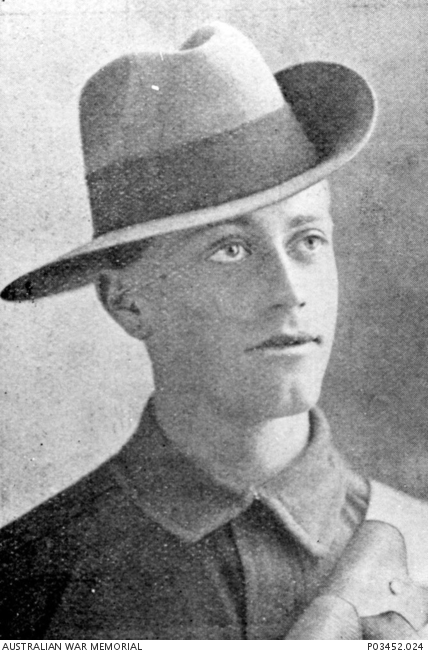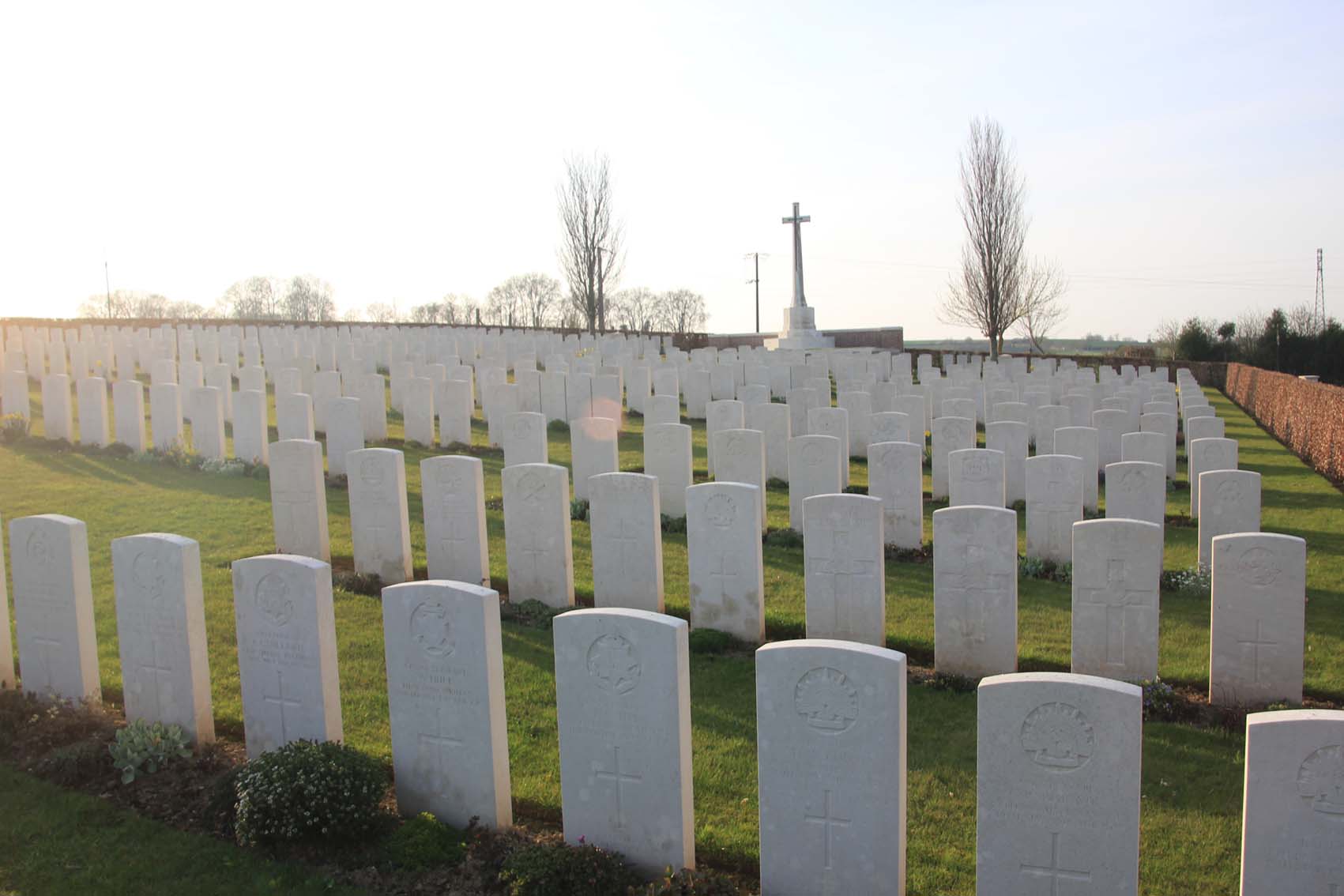Many soldiers of 1914-1918 actually saw very little of the war. They arrived at their battalions and within days, or even hours, were killed or wounded. Others, on the other hand, lived through and endured years of hardship and trauma beyond the conception of later generations. One such man was James Leslie Stark who enlisted on 19 August 1914 and witnessed, from a soldier’s point of view, all but seven months of the war.
James was 20 years and 8 months of age when he enlisted at Toowoomba. The son of Henry John and Maggie Stark of West Street, Toowoomba, he was known to the family as “Les”. He was a bank clerk by occupation and graduate of the Toowoomba Grammar School. His father was a businessman, writing to the army under the letter-head of “Cramond & Stark”, mercers, of Ruthven Street, Toowoomba. Les was nearly 5’10” tall and 140 pounds. He had a fair complexion, grey eyes and light brown hair, and was a Presbyterian. The 2nd Light Horse, Les’ original posting, left for the Middle East, on 24 September 1914 aboard A15 Star of England. Les’ cousin Henry C. Stark sailed at about the same time, later losing his life from wounds received at the Gallipoli Landing (see above).
After passage through training camp in Egypt the light horse regiments were sent to Gallipoli as infantry reinforcements. The 2nd LHR arrived on the peninsula about three weeks after the Landing. Les went straight into action bolstering the front lines; however, on 22 June he was hit by a Turkish sniper in Monash Gully. The bullet hit him in the front and went straight through exiting his right leg below the buttocks and just glancing bone. He was evacuated to Egypt; the early medical reports looked sufficiently dire for him to be considered for return to Australia. Amazingly, he recovered quickly and within four months he was back on the peninsula. He remained at Gallipoli for another twelve weeks until the evacuation in December.
After re-organising in Egypt the 2nd LHR was sent to the Suez Canal front to prepare for a possible Turkish attack on Egypt. Les travelled with his mates to the Canal on 14 January 1916. A few weeks later, however, he came back to Cairo sick. Battling mumps and influenza he was kept out of the action until early April. When Les was discharged from hospital the infantry battalions were preparing to leave for France and the trenches. It was decided that he was needed more in France than with his old mates of the light horse. Les became part of the new 49th Battalion, the Queensland unit of the 13th Brigade, 4th Division. An “A” was added to his number and he sailed for France.
Les’ versatility was demonstrated by the success of his new assignment. He was promoted steadily but was sick in the summer of 1916 and was sent to England, thus missing the Pozieres fighting. He returned to France in December; however, by the end of the month he was back in England, recommended for officer training. He spent several months in an officer-cadet battalion at Balliol College, Oxford. Despite this extraordinary change of setting for a man used to the desert front in Egypt, Les did not find an officer’s commission to his liking; he returned to the 49th in France and progressed through the NCO ranks, becoming a sergeant in October 1917.
Les fought with the 49th at Messines and Ypres, surviving battles that cost the battalion dearly. In August 1917 he made a will leaving his property to his father. His close friends Lt. Murchison and Sgt Gross witnessed the document. These three men, along with others, witnessed each other’s wills in that time of constant fighting in 1917. Each of these men had already come through severe wounds.
In March 1918 the German spring offensive began. The Allies retreated and many feared the worst as the Germans relentlessly drove back over the gains of 1916 in the Somme Valley. On 1 April at Bresle, near Albert, Les and Lt Murchison prepared a dug out in the trench wall, hoping to sleep before an attack the next day; that night a German shell scored a direct hit on their “possie”. Both were killed instantly. Their men dug them out, one of them stating to the Red Cross, they were very badly knocked about. Ninian Murchison, recently married while on leave in Scotland, was from Charters Towers. Four days after this terrible loss the 49th was in the fight of its life, defending against a huge German assault from Dernancourt. The 49th lost heavily especially during a counter-attack late in the day. The battle is one of the most famous actions of the AIF in France. Late in the battle Sgt Ernest Gross was killed while single-handedly rushing a German machine gun position. Gross was from New Farm and had fought since the first day at ANZAC. His mates called him “Darkie”.
Les is buried with Murchison at the Ribemont Communal Cemetery Extension (grave I.J.11); Gross is commemorated on the Villers-Bretonneux Memorial.
Les’ death was felt grievously by his family. In November 1919 his mother Maggie wrote to the army in Brisbane regarding an Anzac Badge for Les; her letter reveals the sense of loss of the mothers of the war dead: The letter is addressed to Lt. Brett, who had known Les in the army:
A long time ago I wrote to (the CO) enquiring if he would send us Les’s Anzac Badge like all the other boys have; because he got killed does not or ought not to account for us not getting one. I know you liked Les so perhaps dear sir you might get it for me. Could you? I cannot talk about Les yet to strangers or friends. So don’t think me ungrateful in not accepting your kind offer to tell me what you knew about him. . . . Try and get me anything the 1914 boys get. The Military Authorities never even sent Les’s watch or any small thing he had. Yours sincerely. M. Stark
Toowoomba Grammar School Archive Records State that he started school on 2nd August 1905 and left on 17th June 1910. The School Magazine of May 1918 states, ‘STARK, J. LESLIE.-Second son of H. J. Stark, of West Street. Enlisted with 2nd Light Horse. Wounded on Gallipoli. killed in France, April 1st, 1918.’
External Links:
Australian Red Cross Society Wounded and Missing
AWM4 AIF unit war diaries 23/66/23 49th BN APRIL 1918
Australian War Memorial Honour Roll
Australian National Archives Military Records
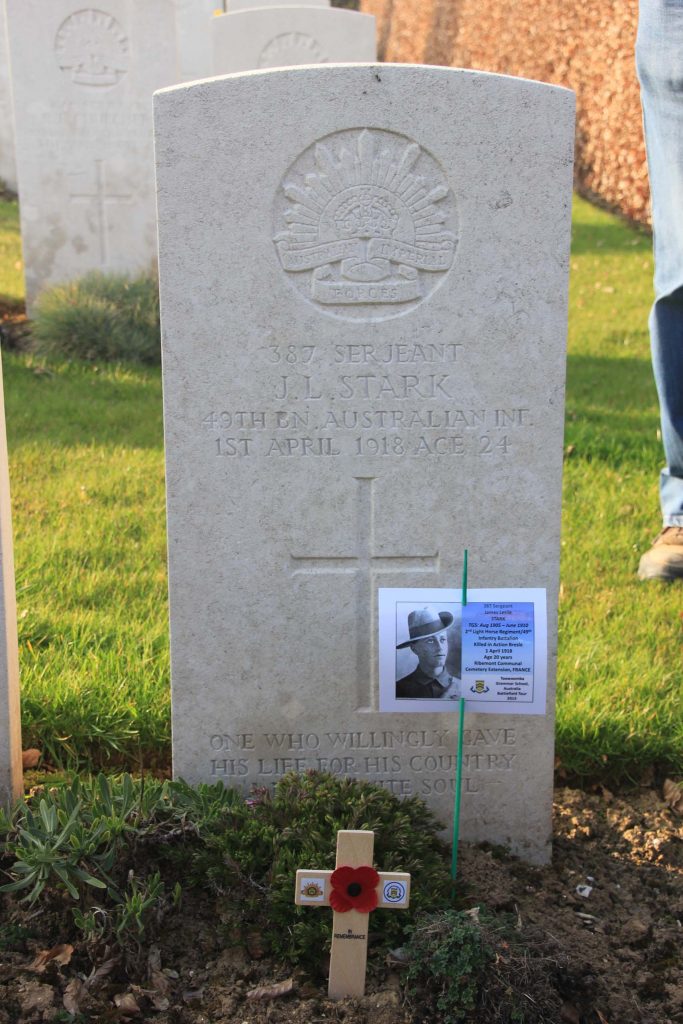
Photograph taken by Ann Hallam
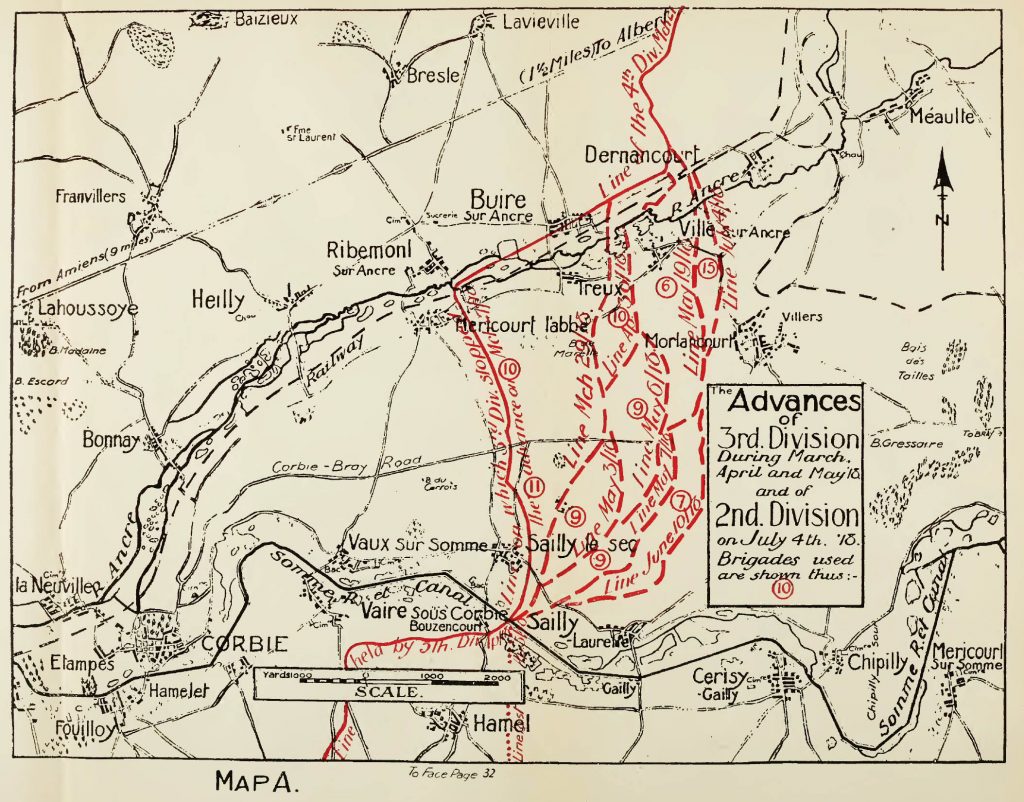
Map of Australian Victories March – May 1918 (49th Battalion was part of the 13th Brigade and 4th Division)
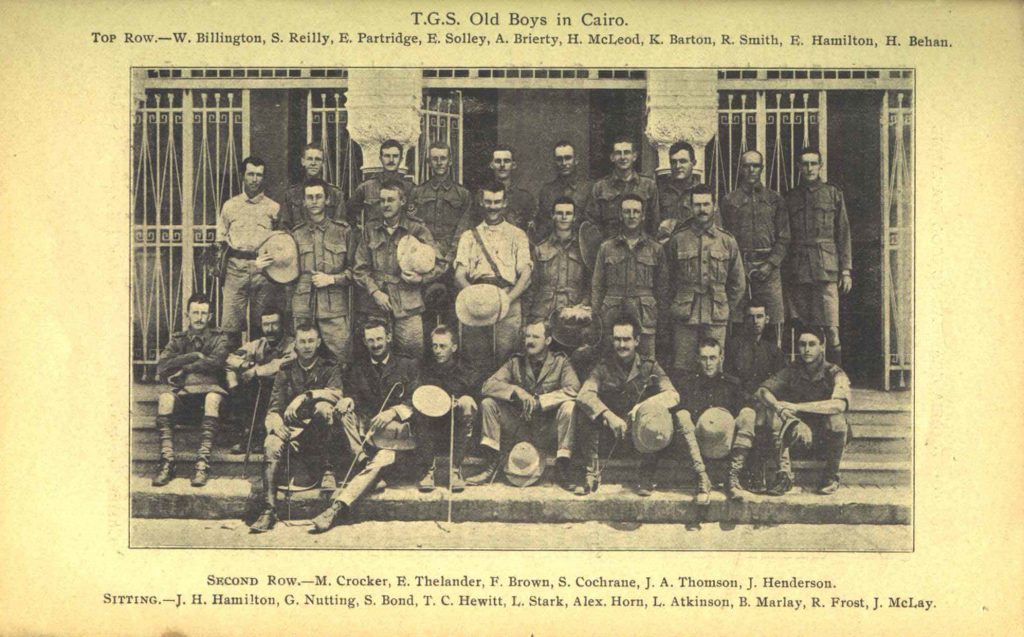
Toowoomba Grammar School Old Boys in Cairo from School Magazine dated November 1915.


